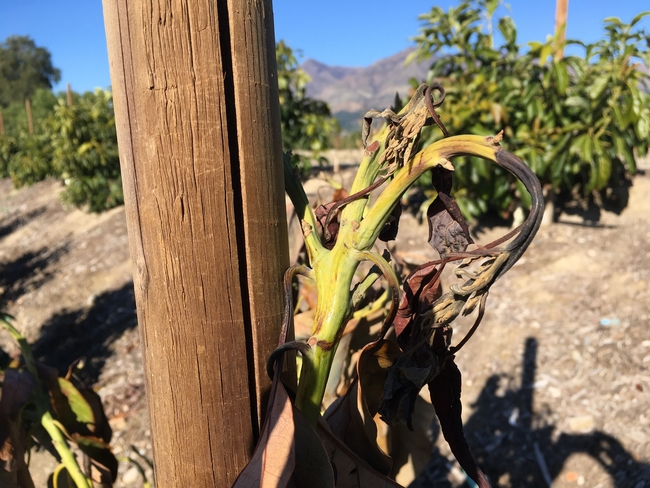The use of foliar nutrients as frost protectants has been promoted for years. Research published by Steve Lindow at UC Berkeley explained that certain naturally occurring bacteria ,such as Pseudomonas syringae and Erwinia herbicola act as nucleating agents for ice formation. The presence of these ice-nucleation-active bacteria results in the formation of ice crystals in plant tissue at temperatures several degrees higher than in their absence. When water in plant cells freezes, it expands and ruptures the cell walls, leading to cell necrosis. The bacteria can be killed or prevented from acting as nucleating agents, thus providing several degrees of frost protection.
This discovery provided a plausible explanation for the previously observed positive effects of foliar sprays on freeze tolerance. While the mechanism can be explained, there is no general agreement on which chemicals are most effective in controlling the ice-nucleating bacteria. These products need to be applied early enough to remove the ice-nucleating bacteria, but not so early that they have a chance to return.
Several specially formulated products are commercially available, but in controlled tests these have generally not given better results than copper-based fungicides or micronutrient mixtures. Certain urea-based products, antibiotics, anti-transpirants, and surfactants have also claimed to be effective.
At issue is not only these surface-dwelling bacteria, but also the age of the tree, development of the canopy, the length degree of the freeze event, the health of the tree, nutritional and irrigation status and when the event occurs. Trees that gradually go into a quiescent stage of winter, are better able to sustain cold stress than those that are hit early on before they start shutting down for winter. Trees develop a cold-hardiness. And plant growth regulators, those both internal and external, play a roll.
I have run trials where I have seen incredible effects after using a certain type of kelp. Kelp has all kinds of ingredients, and they vary depending on what part of the ocean, what species, when it is harvested and how it is processed. When trying to reproduce the effect I had initially seen with the same kelp or other sources, I was not able to get the same effect. This was in three separate trials. It's hard to reproduce the same conditions or the right time of application. The river never runs the same.
Foliar sprays are capable of influencing frost tolerance. Copper and zinc have most consistently shown a positive effect. And the most vulnerable would be small trees that are the easiest to spray. It's a relatively inexpensive treatment and depending on the mate4rial, can be used in both conventional and organic orchards.
You can read about our four-year evaluation of materials for reducing frost damage. There were some positive results, but they are also equivocal - https://ceventura.ucanr.edu/Com_Ag/Subtropical/Publications/Frost/Foliar_Sprays_for_Frost_Protection_of_Young_Citrus_and_Avocado_-_1995_/
